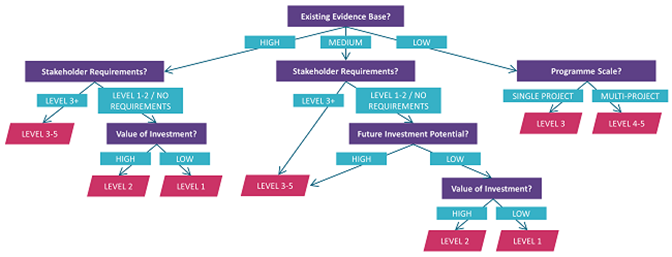 Purpose
Purpose
This step makes sure the measurement and evaluation (M&E) arrangements you choose are right for your funding stream or project. You don’t need to measure everything, only what is important to fulfil the objectives you’ve set out and what is feasible with the resources you have available.
 Process
Process
In Step 3 you need to decide how complex your impact measurement needs to be and whether you need to involve an independent evaluation supplier. You also need to work out whether you need a budget to pay for the evaluation and, if so, who will manage it.



